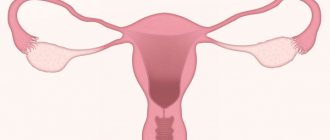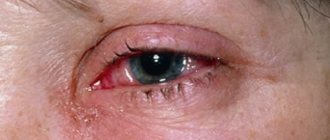Uterine appendages - what are they?
The content of the article
The appendages, that is, the ovaries and fallopian tubes, belong to the pelvic organs. They are located symmetrically on the right and left sides of the uterus. Inflammation of the appendages usually begins with inflammation of the fallopian tubes. Due to the close proximity of the appendages, inflammation of the ovaries quickly occurs. Because of this location, inflammation of the ovaries and fallopian tubes is not usually identified as separate disease entities.
Pelvic inflammatory disease (PID) is most often diagnosed in young, actively sexual women. The symptoms are annoying, and neglect of treatment can lead to the development of a chronic form of the disease and serious complications, including infertility.
Prevention
Properly organized professional prevention of ovarian inflammation is extremely important for women, especially during the active reproductive period. Due to a chronic pathological process in the area of the pelvic organs, adhesions often occur, forming tubular infertility, resulting from the distance of the tubes and the inability to become pregnant in the future.
Prevention of complications is early initiation of treatment. It is quite difficult to completely protect yourself from inflammatory processes. Ophoritis can occur even against the background of general health, with slight hypothermia and decreased immunity. It is recommended to monitor the quality of personal hygiene and underwear. Air flows and shifting pelvic organs. Stagnant blood flow can contribute to the development of infectious and inflammatory processes. Several times a year, visit a gynecologist and examine the genital organs.
It is very important to avoid casual sex and abortion, which often result in inflammation of the ovaries. Even with minor irregularities in the menstrual cycle, which can help restore the pathological process and prevent complications dangerous to health.
Causes of inflammation of the appendages
There are two possibilities for the development of infection: ascending and descending spread. The first method is preferred by anaerobic bacteria, colon bacilli, streptococci, staphylococci and chlamydia. The vagina is not free of bacteria and is home to many germs. This is the potential start of an upward pathway for bacteria.
Then they pass through the mouth of the cervical canal and provoke inflammation of the mucous membrane of the uterine cavity. It is only a matter of time before they enter the fallopian tube and cause inflammation of the appendages.
Bacteria can also enter the upper region of the reproductive system, penetrating the absorptive spaces of the cervical canal and reaching the appendages through the lymph.
Normally, bacteria have a complex penetration process, which was described above. For this there must be special conditions. Firstly, there must be a nutrient medium for pathogenic bacteria (blood, secretions). Secondly, a gateway for infection is needed, for example, a damaged mucous membrane.
There are a number of factors predisposing to the occurrence of infection through an ascending route:
- period of bleeding from the uterine cavity - menstruation;
- miscarriage;
- childbirth, postpartum period;
- performing cleaning (curettage);
- performing hysteroscopy;
- hysterosalpingography;
- installation of an intrauterine device.
Descending infection develops differently: bacteria enter the appendages through the blood. In this case, the source of origin of microbes is located in a completely different organ. Another possibility is infection, for example, from an inflamed appendix sticking to the appendages.
Causes of the disease
Inflammation often indicates the presence and active development of infections in the body.
In most cases, the causative agents of adnexitis are:
- gonorrhea;
- Trichomonas;
- chlamydia.
Pathogenic microorganisms actively develop and multiply if the immune system is weakened. Having penetrated inside, the infection will remain latent until the protection fails.
The following factors can provoke a decrease in the function of the immune system:
- psychological or physical fatigue;
- violation of the daily routine;
- poor nutrition;
- frequent exposure to stressful situations;
- recent colds;
- hypothermia.
Inflammation of the appendages in women can be provoked by overly active sexual relations and unprotected sexual intercourse. They contribute to the appearance of infection in the body.
A negative factor that provokes the development of the inflammatory process is the rapid resumption of sexual activity in a woman who has recently given birth to a baby. During this period, the immune system is still weakened and is not able to resist pathogenic microflora.
Inflammation of the appendages - symptoms
Symptoms of adnexitis depend on the type of disease. Most often they appear immediately after obstetric and gynecological procedures or uterine bleeding. The condition of acute adnexitis is characterized by high fever and malaise.
The most annoying symptom is pain in the lower abdomen. It is acute in nature, and its severity can be so significant that some patients cannot touch the sore spot. Sometimes symptoms from other organs occur.
During inflammation of the pelvic organs, an abscess develops, occupying the Douglas cavity. Swelling and swelling can put pressure on the rectum, causing diarrhea, constipation, and even intestinal obstruction. The mucous membrane of the uterine cavity, affected by the inflammatory process, gives other symptoms - the release of blood or pus from the cervical canal.
If the inflammatory process is not sufficiently treated, subacute or chronic adnexitis may develop. Then the symptoms will be less turbulent. Pain in the lower abdomen occurs to a lesser extent - in chronic conditions it is nagging, pain more often appears during physical activity and sexual intercourse. Body temperature is less high.
Gynecological diseases - causes and symptoms of ovarian dysfunction
Ovarian dysfunction Ovarian dysfunction is what diseases that disrupt the menstrual cycle and hormonal function of the ovaries lead to. Many women do not pay enough attention to this. Ovarian dysfunction can lead to infertility and cancer. Don't be so irresponsible about your health.
Symptoms of ovarian dysfunction The duration of menstruation ranges from three days to a week. The interval between critical days is 21-35 days. During menstruation, up to 100 ml is lost. blood. Violation of one of these parameters means the development of ovarian dysfunction - dysfunctional uterine bleeding. A woman’s body contains hormones that are responsible for the hormonal function of the ovaries. They are produced by the pituitary gland, the main endocrine gland of the body. When the formation and release of hormones is disrupted, the menstrual cycle fails, namely the absence of ovulation - the release of mature eggs. Without ovulation, the menstrual cycle becomes incomplete and, as a result, irregular. · Ovarian dysfunction - spotting appears between menstrual periods, and the periods themselves become too weak. · Ovarian dysfunction - Before menstruation and in the middle of the cycle, severe nagging pain in the lower abdomen may appear. Sometimes they radiate to the hip or lumbar region. · Ovarian dysfunction - There is an increase in body temperature. · Ovarian dysfunction – Pus may form in the ovaries. · Ovarian dysfunction – A woman’s mood changes. She experiences menstruation very acutely with sudden mood swings, pronounced apathy, and weakness. · Ovarian dysfunction - The complexion becomes pale, the heartbeat quickens, dizziness appears, and appetite decreases. · Ovarian dysfunction - In advanced stages of the disease, menstruation may stop.
Causes of ovarian dysfunction The cause of dysfunction is endocrine disorders or thyroid disease. Inflammation of the ovaries is also not uncommon. This happens due to lack of proper hygiene, especially in intimate life. The ovaries can suffer due to diseases of the fallopian tubes, due to infection of the intestines with an infection that enters the ovaries through the blood vessels. They suffer if the other genital organs are sick: the uterus and appendages. Affects the presence of tumor dysfunction, fibroids, endometriosis. The “harmony” in the ovaries is disrupted when a woman has diabetes or obesity. The use of certain medications also often fails. The work of the ovaries is weakened by stress, poor lifestyle, and frequent depression. If a woman moves from areas with one climate to another, dysfunction can also make itself felt. The cause of ovarian dysfunction is an abortion that was performed incorrectly or the first abortion in a woman’s life.
Diagnosis of ovarian dysfunction To find the cause of ovarian dysfunction, you need to turn not to a simple gynecologist, but to a gynecologist - endocrinologist. Do an ultrasound of the genitals, thyroid and adrenal glands. Get tested for infections such as candidiasis, chlamydia and others. To do this, a smear is taken from the patient. To find out the state of hormonal levels, other tests are taken: blood and urine tests. The pituitary gland is also examined using skull x-rays and tomography. Electroencephalography is required to identify the causes of dysfunction. A curettage is done from the cervix and uterine cavity, which shows the condition of the uterus from the inside.
Treatment of ovarian dysfunction It is necessary to restore hormonal imbalances, cure infection and other associated diseases. If necessary, change your lifestyle, for example, not react so emotionally to difficulties that arise. It is possible that nutritional supplements and vitamins will be prescribed. Sometimes acupuncture and therapeutic massage are prescribed. As a result of treatment, the menstrual cycle is restored. Ovarian dysfunction Women who develop this pathology do not immediately realize that their health is in danger. They often believe that a slight delay in menstruation or, conversely, frequent menstruation, an irregular menstrual cycle is an individual feature of their body. Nevertheless, the normal menstrual cycle has strict parameters: the duration of menstruation is 3 - 7 days; the interval between menstruation is 21-35 days; blood loss during menstruation is 50-100 ml. It is important to know that any deviation from this norm is a sign of ovarian dysfunction .
The reproductive system functions normally only if the whole organism is healthy. The first thing that is disrupted in women with serious illnesses is menstrual and reproductive functions. Therefore, dysfunction of the ovaries is most often a signal of an incipient disease. If you do not pay attention to this in time, then a slight dysfunction of the ovaries and the menstrual cycle can result in serious consequences.
Causes and symptoms of ovarian dysfunction Ovarian dysfunction is a general concept that refers to a violation of the hormonal function of the ovaries. This pathology is manifested either by a delay in menstruation for more than 35 days, followed by bleeding lasting more than 7 days, or by irregular frequent menstruation, following each other at different intervals (less than 21 days). Such bleeding is called dysfunctional uterine bleeding. The causes of this disorder are quite varied: · internal defects in the ovary itself (congenital and acquired) · concomitant endocrine diseases (thyroid gland, adrenal glands, pituitary gland, hypothalamus); · stress, neuroses; · diseases of the genital organs (adenomyosis, ovarian tumors, uterine fibroids, endometriosis, cervical cancer, uterine body); · violation of the location of the intrauterine device, termination of pregnancy (medical abortion, spontaneous miscarriage); · the influence of a number of natural and physical factors (climate change, excessive solar radiation, radiation damage). Women with ovarian dysfunction may experience pain in the lower abdomen before or during bleeding, most often of a pulling nature. However, sometimes the pain is acute, spreads throughout the abdomen, and radiates to the lower back. With ovarian dysfunction, premenstrual syndrome is often very pronounced: lethargy, apathy, tearfulness, or, conversely, irritability. If the bleeding is profuse and prolonged, then these symptoms are accompanied by signs of anemia (a decrease in the amount of hemoglobin and red blood cells in the blood) - pallor of the skin and visible mucous membranes appears, the heart rate increases, headaches, dizziness, weakness, drowsiness, and loss of appetite.
Any irregularities in the menstrual cycle are a reason to immediately consult a doctor. Sometimes ovarian dysfunction can be the first sign of asymptomatic serious diseases. The examination will allow you to exclude conditions that require immediate surgical intervention: ectopic pregnancy, tumor diseases.
The basis for the occurrence of all dysfunctional uterine bleeding is a violation of the formation and release of hormones that regulate the hormonal function of the ovaries. These hormones are produced by the pituitary gland1 and are called follicle-stimulating hormone (FSH), luteinizing hormone (LH) and prolactin (PRL). Each phase of the menstrual cycle is characterized by a special ratio of the content of these hormones. This is a necessary condition for follicle maturation, ovulation and pregnancy. If the hormonal function of the ovaries is disrupted, this ratio changes. With the initial manifestations of ovarian dysfunction, the ovulation process is most often disrupted - it does not occur. This disorder is called anovulation (from the Latin a - absence). Therefore, uterine bleeding with ovarian dysfunction is acyclic, i.e. the menstrual cycle is not observed and does not go through all its phases. DUBs disappear on their own after an indefinite period of time, but often recur without proper treatment. Acyclic uterine bleeding can be frequent (with an interval of less than 21 days), rare (with an interval of more than 35 days), and blood loss in them can be greater than normal (over 100 ml). But in the future, amenorrhea almost always develops - i.e. no menstruation for 6 months or more. With ovarian dysfunction during childbearing age, the content of estrogen in the body is almost always increased. This is a risk factor for the development of diseases such as uterine fibroids, endometriosis, malignant tumors of the mammary glands, and mastopathy.
The basis for the occurrence of all dysfunctional uterine bleeding is a violation of the formation and release of hormones that regulate the hormonal function of the ovaries. These hormones are produced by the pituitary gland1 and are called follicle-stimulating hormone (FSH), luteinizing hormone (LH) and prolactin (PRL). Each phase of the menstrual cycle is characterized by a special ratio of the content of these hormones. This is a necessary condition for follicle maturation, ovulation and pregnancy. If the hormonal function of the ovaries is disrupted, this ratio changes. With the initial manifestations of ovarian dysfunction, the ovulation process is most often disrupted - it does not occur. This violation is called (from the Latin a - absence). Therefore, uterine bleeding with ovarian dysfunction is acyclic, i.e. the menstrual cycle is not observed and does not go through all its phases. DUBs disappear on their own after an indefinite period of time, but often recur without proper treatment. Acyclic uterine bleeding can be frequent (with an interval of less than 21 days), rare (with an interval of more than 35 days), and blood loss in them can be greater than normal (over 100 ml). But in the future, amenorrhea almost always develops - i.e. no menstruation for 6 months or more. With ovarian dysfunction during childbearing age, the content of estrogen in the body is almost always increased. This is a risk factor for the development of diseases such as uterine fibroids, endometriosis, malignant tumors of the mammary glands, and mastopathy.
Diagnosis of ovarian dysfunction To identify the causes of dysfunctional uterine bleeding, the following methods can be used: · Examination by a gynecologist. · Ultrasound of the pelvic organs, and, if necessary, other internal organs (thyroid gland, adrenal glands). · Examination for the presence of sexually transmitted infections (candidiasis, mycoplasmosis, ureaplasmosis, trichomoniasis, chlamydia, etc.), using microscopy, flora culture of genital tract discharge, PCR. · Study of the hormonal profile (levels of FSH, LH, PRL, estrogens, progesterone; if necessary, determination of the level of thyroid and adrenal hormones). For these examinations, blood from a vein and urine are taken for analysis. · Examination of the condition of the pituitary gland: radiography of the skull, computed tomography, magnetic resonance imaging. · Study of the state of the brain - electroencephalography. · Examination of the condition of the inner layer of the uterus - the endometrium: hysteroscopy (examination of the uterine cavity using a special apparatus) with separate diagnostic curettage1. Curettage is performed from the cervical canal and the uterine cavity. · Histological examination of the scraping obtained (microscopic examination). The scope and procedure of the examination in each individual case is determined by the doctor. Women with chronic ovarian dysfunction should visit a gynecologist more often (regular examinations once every 3-4 months), as they have a high risk of developing other diseases of the reproductive system.
Treatment The first step in treatment is always to stop the bleeding . For this purpose, therapeutic and diagnostic separate curettage is often performed. Along with curettage, hysteroscopy is performed - this makes sure that the entire mucous membrane of the uterus is removed and concomitant diseases are identified: adenomyosis, uterine fibroids, polyps, etc. A scraping from the uterine cavity is examined and, if a concomitant disease is detected, appropriate treatment is prescribed. Next, prevent recurrence of bleeding . To do this, it is necessary to restore the normal menstrual cycle. From the 16th to the 26th day inclusive after curettage, progesterone preparations are prescribed (with DUB its level is significantly reduced). These can be duphaston, utrozhestan, norkolut. After using them for 7 days, menstruation begins. The first day of menstruation is considered the beginning of the cycle. If you are planning a pregnancy, then to normalize the menstrual cycle it is necessary to stimulate ovulation (after all, in most cases it does not occur). For this purpose, drugs such as clomiphene, prophasia, pergonal, humigon are used - hormonal drugs that restore the ovulatory menstrual cycle and stimulate ovulation. They are taken from the 5th to the 9th day of the menstrual cycle inclusive. While taking any of these drugs, the woman undergoes an ultrasound scan: the frequency of ultrasound is determined by the doctor - he observes the rate of maturation of the follicle. When the follicle reaches the required size (18 mm), and the thickness of the endometrium becomes 8-10 mm, hCG, human chorionic gonadotropin, is administered in the dose required for ovulation. Human chorionic gonadotropin is a hormone that stimulates the transition of the menstrual cycle to the second - luteal phase. As a rule, ovulation stimulation is carried out over 3 menstrual cycles. After this, for another three menstrual cycles, it is recommended to use only progesterone preparations, also from the 16th to 26th day of the menstrual cycle. The onset of ovulation is monitored by measuring the basal temperature (in the rectum), the size of the follicle and measuring the thickness of the endometrium using ultrasound (carried out once a month, the day is determined by the doctor). When the normal menstrual cycle is restored, a woman can become pregnant and bear a child. If pregnancy is not planned, combined oral contraceptives (COCs) - the drug is selected by the doctor individually for each woman: the drugs normalize the menstrual cycle, prevent the consequences of dysfunction such as uterine cancer, ovarian cancer, mastopathy. The hormone content in these drugs is lower (there are even microdosed drugs), they do not affect weight changes, and while taking them, the manifestations of premenstrual syndrome cease. Unwanted pregnancy is impossible when taking COCs correctly. It should be emphasized that women who have ever had ovarian dysfunction are contraindicated for such a method of contraception as the intrauterine device.
Complications after inflammation of the appendages
Inflammation of the appendages can lead to many complications associated with suppuration and the subsequent transition of the disease process to the peritoneum, covering the pelvis and abdomen. There is a risk of developing a condition of peritonitis (local or diffuse).
The inflamed structures, together with neighboring organs, form a so-called inflammatory tumor, which should be operated on after acute symptoms have resolved.
Other complications of adnexitis:
- fallopian tube abscess;
- ovarian abscess;
- ovarian-fallopian abscess;
- Douglas cavity abscess;
- rupture of abscesses and formation of fistulas;
- inflammation of the uterus;
- fallopian tube cyst;
- fallopian tube hematoma;
- adhesions in the pelvis;
- infertility due to inflammation of the fallopian tubes, which makes transporting the egg impossible, as adhesions form, which obstruct the tube.
A complication of adnexitis during pregnancy is ectopic pregnancy in the fallopian tubes - a fertilized egg cannot enter the uterine cavity due to post-inflammatory changes in the mucous membrane of the fallopian tube and implantation of the embryo in an unsuitable place.
Symptoms of right-sided pathology
Signs and symptoms of inflammation of the right ovary in women are nonspecific, which significantly complicates timely diagnosis. Acute right-sided oorphitis is accompanied by the following symptoms:
- temperature increase to 38 – 39 °C;
- sharp pain localized on the right;
- spread of pain to the groin, lower back, inner thighs;
- pathological vaginal discharge with purulent and mucous inclusions.
Pain with oorphitis intensifies during movement and physical activity. Most women complain of chills, weakness, lethargy, and dizziness. In a chronic course, the signs of ovarian inflammation in women on the right are blurred:
- discomfort during intimacy;
- profuse vaginal discharge with an unpleasant odor;
- violation of the monthly cycle;
- changes in the nature and volume of menstrual bleeding;
- frequent urination, accompanied by discomfort.
In the chronic course of oorphitis, it is very difficult to determine the correct diagnosis and create an effective treatment regimen. In this case, the infection spreads to the left ovary, uterine tissue, and fallopian tubes, causing their deformation and disrupting normal functioning. Therefore, if disturbing symptoms raise suspicion of inflammation of the right ovary, it is better not to self-medicate, but to visit a gynecologist as soon as possible in order to begin adequate treatment as soon as possible and prevent the development of irreversible consequences.
How to detect inflammation of the ovaries and fallopian tubes?
Pain in the lower abdomen on the right, left side (or bilateral) requires a gynecological examination. To diagnose adnexitis, it is necessary to perform a smear from the vagina and cervix with an antibiogram to check which pathogen caused the symptoms and find out which antibiotic should be prescribed.
When diagnosing inflammation of the uterine appendages, blood tests are also prescribed to evaluate the number of leukocytes and C-reactive protein. During inflammation of the appendages, the ovaries (or appendages) become enlarged, so abdominal ultrasound is a useful diagnostic method.
Treatment of the disease
Before starting to treat ovarian inflammation in women, the doctor must confirm the diagnosis, establish the localization of the pathological process and find out the causes of the disease. Therefore, after collecting anamnesis and gynecological examination, a referral is given for a diagnostic examination, including:
- blood and urine tests;
- examination of smears for microflora;
- PCR analysis;
- Ultrasound of organs located in the pelvis;
- laparoscopy.
Acute oorphitis is treated with antibiotics, which are selected individually for each individual case, taking into account the type of pathogen and its sensitivity to a specific drug. Vaginal suppositories, which have an antimicrobial, soothing, regenerating effect, will help enhance the effect of systemic antibiotics.
To eliminate pathological symptoms, the following groups of drugs are prescribed:
- non-steroidal anti-inflammatory drugs;
- analgesics;
- antihistamines.
Physiotherapeutic procedures will help improve the effect of drug treatment:
- ultrasound;
- magnetic therapy;
- laser therapy;
- electrophoresis;
- acupuncture;
- impulsive currents;
- ozokerite;
- darsonvalization;
- mud therapy;
- radon baths.
To prevent re-inflammation of the ovaries, after complete recovery, it is important to follow the rules of prevention available to everyone:
- avoid hypothermia;
- observe the rules of intimate hygiene;
- lead a protected sex life using barrier methods of contraception;
- treat genitourinary system infections in a timely manner;
- maintain immunity at a high level.
Treatment of adnexitis - antibiotics, surgery
The healing process depends on the type of inflammation of the appendages, the patient’s condition and the complications listed above. The basis of treatment for an acute condition is urgent hospitalization and intensive antibacterial therapy. An antibiotic for adnexitis must have a wide spectrum of action. Initially, the drugs are administered intravenously, then administered orally. The gynecologist will also prescribe a diet and apply cold compresses to the abdomen.
Surgery for inflammation of the appendages is used in case of failure of conservative treatment, deterioration of the patient’s condition, or the appearance of symptoms of peritonitis. Antibiotics are also used for chronic and sub-spatial conditions. Only complications of the resulting inflammation of the appendages are operated on. The most dangerous of them is peritonitis, caused, for example, by rupture of an ovarian abscess.
In life-threatening conditions, surgeons use an open surgical method, which consists of a wide incision in the abdominal tissue and cleansing the abdominal cavity of pus. For less serious complications, such as a fallopian tube cyst, laparoscopy may be used.
Treatment of inflammation of the appendages with home remedies is ineffective, and any attempts to use natural methods, including herbs, can only do harm and delay a visit to the gynecologist.
Functions of the ovaries
The main functions of the ovaries are the production of eggs and the production of female sex hormones necessary to regulate reproductive function. In addition, hormonal levels affect a woman’s appearance and emotional state. The functioning of the ovaries is controlled by two main hormones - follicle-stimulating and luteinizing hormones.
The name follicle-stimulating hormone indicates that it is responsible for the growth of the egg. The egg, having increased to a certain size, is released into the abdominal cavity - this is how ovulation occurs.
During ovulation, luteinizing hormone levels increase. In addition to these hormones, which directly affect the function of reproduction, other hormonal substances are produced that regulate the thickening and growth of the walls of the uterus, the development of the mammary glands, etc.
Diagnostic methods
Diagnosis of oophoritis begins with manual examination, palpation and medical history. It is important to find out the presence of acute or chronic infections, injuries and invasive interventions in the anamnesis.
Then diagnostic procedures and laboratory tests are prescribed:
- general blood analysis;
- general urine analysis;
- bacterial culture;
- polymerase chain reaction;
- linked immunosorbent assay.
If there is a primary infection not related to the genitourinary system, you may need to consult a doctor of related specialization.
To make an accurate diagnosis, the patient is prescribed an ultrasound of the pelvic organs: the study allows one to visualize structural changes and determine the localization of the inflammatory process. For a thorough examination of the uterus and appendages, laparoscopy is performed.
Kinds
Depending on the nature of the disease, the following forms are distinguished:
- Acute oophoritis. This form of the disease is characterized by severe symptoms. The patient's general body temperature rises, pathological discharge mixed with pus and blood appears. Pain is felt during sexual intercourse; pain occurs in the lower abdomen, spreading to the lower back and sacrum.
- Subacute oophoritis. An intermediate form between acute and chronic oophoritis. As a rule, it develops as a secondary inflammatory process. The source of inflammation in the subacute form of the disease is another disease - helminthic infestation, fungal infection, tuberculosis.
- Chronic oophoritis. Develops against the background of acute oophoritis in the absence of timely and adequate treatment. It can also be a complication of urethritis, cystitis, appendicitis. Exacerbations of oophoritis occur after hypothermia or weakened immunity: the menstrual cycle is disrupted, and the woman quickly gets tired.
The inflammatory process can affect both ovaries simultaneously: in this case, bilateral oophoritis is diagnosed. If only one of the ovaries is affected, a diagnosis of right-sided or left-sided oophoritis is made.
The prevalence of the inflammatory process may be associated with the source of infection. For example, right-sided oophoritis often develops with appendicitis. The bilateral form of the disease is usually associated with infection of the ovaries through the bloodstream or lymph.
Depending on the type of pathogen, specific and nonspecific oophoritis are distinguished. The first type of disease includes inflammation resulting from vaginal penetration of infectious agents - fungi, chlamydia, trichomonas, herpes. Oophoritis is called nonspecific if the inflammatory process develops due to imbalances in the internal bacterial microflora.
A rare form of the disease is autoimmune oophoritis. It occurs as a result of a genetic defect in the presence of provoking factors - injuries, chronic inflammatory processes, endometritis, adnexitis, salpingitis. Autoimmune oophoritis is more common in patients over 30 years of age who have had genital infections and invasive medical interventions.
Cost of treatment for inflammation of the right ovary
The treatment regimen for inflammation of the right ovary in women is determined individually, taking into account the nature of the course, stage, presence of associated complications, etc. Our specialists will help you quickly determine the diagnosis and prescribe the most effective therapy, which will help you fully recover and prevent negative consequences.
To find out the cost of treatment for right-sided orthitis and make an appointment with a specialist at the Healthy Family clinic, call the number or request a call back. As soon as the managers see the request, they will immediately contact you, advise on all issues of interest and agree on a time convenient for you.
Diagnosis of oophoritis
At the first appointment, the gynecologist listens to the patient’s complaints, examines the medical history (past diseases and operations, contraceptives), conducts an examination and takes a smear for the vaginal microflora.
Then the doctor sends for examination (methods are selected individually for each woman):
- Ultrasound of the pelvic organs;
- hysterosalpingoscopy;
- laparoscopy;
- General and biochemical analysis of blood and urine;
- bacteriological culture - identifies infectious agents and studies their sensitivity to antibiotics.
The likelihood of pregnancy with inflammation of the right ovary
If the disease is diagnosed in a timely manner and treatment is prescribed adequately, the probability of successfully conceiving, carrying and giving birth to a healthy child is 70–80%. When right-sided orphitis has passed into a chronic stage, accompanied by frequent exacerbations, the probability of pregnancy does not exceed 20 - 25%.
Therefore, if a woman has not yet realized her reproductive function or is planning another pregnancy, she should closely monitor women’s health, and if there are any suspicious signs, seek professional medical help, and not self-medicate.









